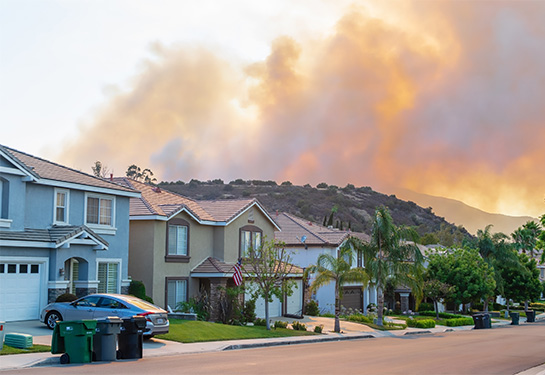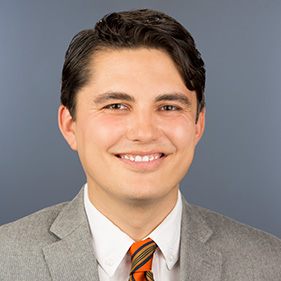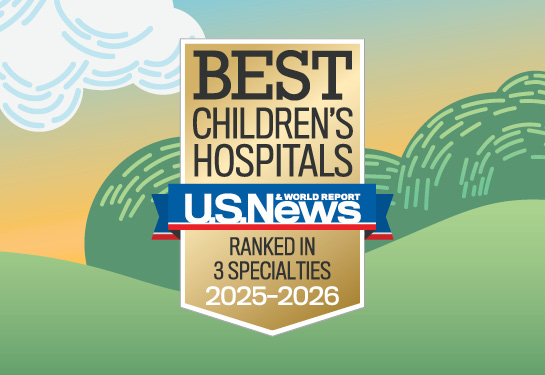UC Davis Health develops a real-time action plan to help patients with lung disease cope with wildfire smoke
Located near recent wildfires, UC Davis has experience caring for patients affected by poor air quality from smoke
A multidisciplinary team of UC Davis Health experts are calling on health systems to create wildfire preparedness action plans to support patients with preexisting respiratory diseases. They are urging providers to proactively put in place interventions to mitigate the effects of poor air quality from smoke.
Their article, published in the Journal of the COPD Foundation, identifies the needs of high-risk populations when affected by wildfire smoke. It outlines an action plan for health systems to help these groups with the burdens of poor air quality from wildfires.
“Patients being treated for respiratory conditions are at high-risk of exacerbations of symptoms when they are exposed to wildfire smoke,” said Reshma Gupta, chief of population health and accountable care at UC Davis Health and co-author of the article. “Unfortunately, wildfire frequency and severity are increasing in the United States and negatively affecting these clinically at-risk and underserved communities. So, there is a significant need for us to install interventions to mitigate the health threat posed by wildfires.”
Health impacts of poor air quality
Many components of wildfire smoke can have adverse impacts on health, especially for those with preexisting respiratory diseases.

Currently more than 34 million people living in the United States live with a chronic lung disease like asthma, chronic obstructive pulmonary disease (COPD) or Alpha-1 antitrypsin deficiency (AATD) according to the American Lung Association.
Exposure to wildfire-related air pollutants has been shown to cause and exacerbate diseases of the lungs, heart, brain and nervous system, skin and other major organs.
For patients being treated for preexisting respiratory conditions, poor air quality causes inflammation in the lungs. This can exacerbate symptoms and lead to emergency department visits and hospitalizations.
“Poor air quality can trigger exacerbations — acute increase in shortness of breath, cough, dyspnea — even leading to hospitalization,” explained Brooks Kuhn, co-director of the Comprehensive COPD Clinic at UC Davis Health and co-author of the article. “The impact is not just transient: Respiratory exacerbations lead to persistent and accelerated worsening of lung function.”
And adults are not the only ones at risk for these complications.
“Children also see these impacts when they are exposed to poor air quality from wildfires,” said Kiran Nandalike, chief of pediatric pulmonology at UC Davis Children’s Hospital. “As we see more wildfires impacting our communities each year, the urgency for health systems to outline a response to support patients is pressing.”
Wildfire population health approach
The targeted wildfire preparedness action plan adopted by UC Davis Health uses a population health approach. This means care teams with providers from different specialties proactively work with patients who are at higher risk of developing symptoms from poor air quality.
“A population health approach zeroes in on targeted interventions tailored to specific communities or population groups,” Gupta explained. “This approach considers a range of determinants, including social, economic, environmental and behavioral factors, which affect the health of these groups.”
The team’s wildfire preparedness action plan includes:
- Identifying clinically at-risk and underserved patient populations using well-validated, condition-targeted registries
- Assembling multidisciplinary care teams to understand the needs of these communities and patients
- Creating custom analytics and wildfire-risk stratification
- Developing care pathways based on wildfire-risk tiers by disease, risk of exposure and health care access
- Identifying outcome measures tailored to interventions with a commitment to continuous, iterative improvement efforts
“We have seen population health approaches be successfully implemented to support patients with dementia, chronic kidney disease, and cancer,” Gupta said. “Using this model, we can adapt to the threat of poor air quality from wildfires and adopt a proactive approach to meet the needs of clinically at-risk and underserved patients.”
Using this model, we can adapt to the threat of poor air quality from wildfires and adopt a proactive approach to meet the needs of clinically at-risk and underserved patients.” —Reshma Gupta
UC Davis Health experience with wildfires
As the regional academic health system in Northern California, UC Davis Health has been at the epicenter of recent wildfires – including the recent Park Fire, the fourth largest in California history. Because of this experience, the health system team has experience caring for patients in the most affected areas.
“Over the last few years, our clinicians have routinely cared for patients with physical, financial, and occupational barriers to clean air,” explained Kuhn. “We are uniquely equipped to share our experiences of serving communities harmed by wildfires.”
To direct wildfire preparedness interventions to those who need them, UC Davis Health has assembled a multidisciplinary care team to serve as liaisons between communities affected by wildfires and the health system. Some of the team’s efforts include:
- Identifying at-risk patients
- Providing air quality health education
- Personalizing outreach to patients
- Building and distributing "go-bags" with supplies for patients
- Partnering with community organizations to provide support to patients
“The patients have been so grateful to receive this proactive approach,” Gupta said. “Often patients feel alone and closed off from the world when they are locked in their homes due to poor air quality. Working with our team empowers them to protect themselves in the comfort of their own home.”
Over the last few years our clinicians have routinely cared for patients with physical, financial, and occupational barriers to clean air. We are uniquely equipped to share our experiences of serving communities harmed by wildfires.” —Brooks Kuhn
Call to action
As climate change progresses, wildfires are now a yearly expectation in the United States. To meet the needs of clinically at-risk and underserved patients affected by this increasing health threat, the authors of the article are urging health systems to replace reactionary approaches with collaborative, innovative, and proactive approaches.
“In the coming years, it will be crucial to prepare health systems, clinicians and communities to manage the profound health impacts of environmental events and prevent potentially devastating consequences,” Gupta said. “We must come together to sustain this outreach and support patients at risk from wildfire exposure.”
Learn more about pediatric pulmonology at UC Davis Children’s Hospital.






